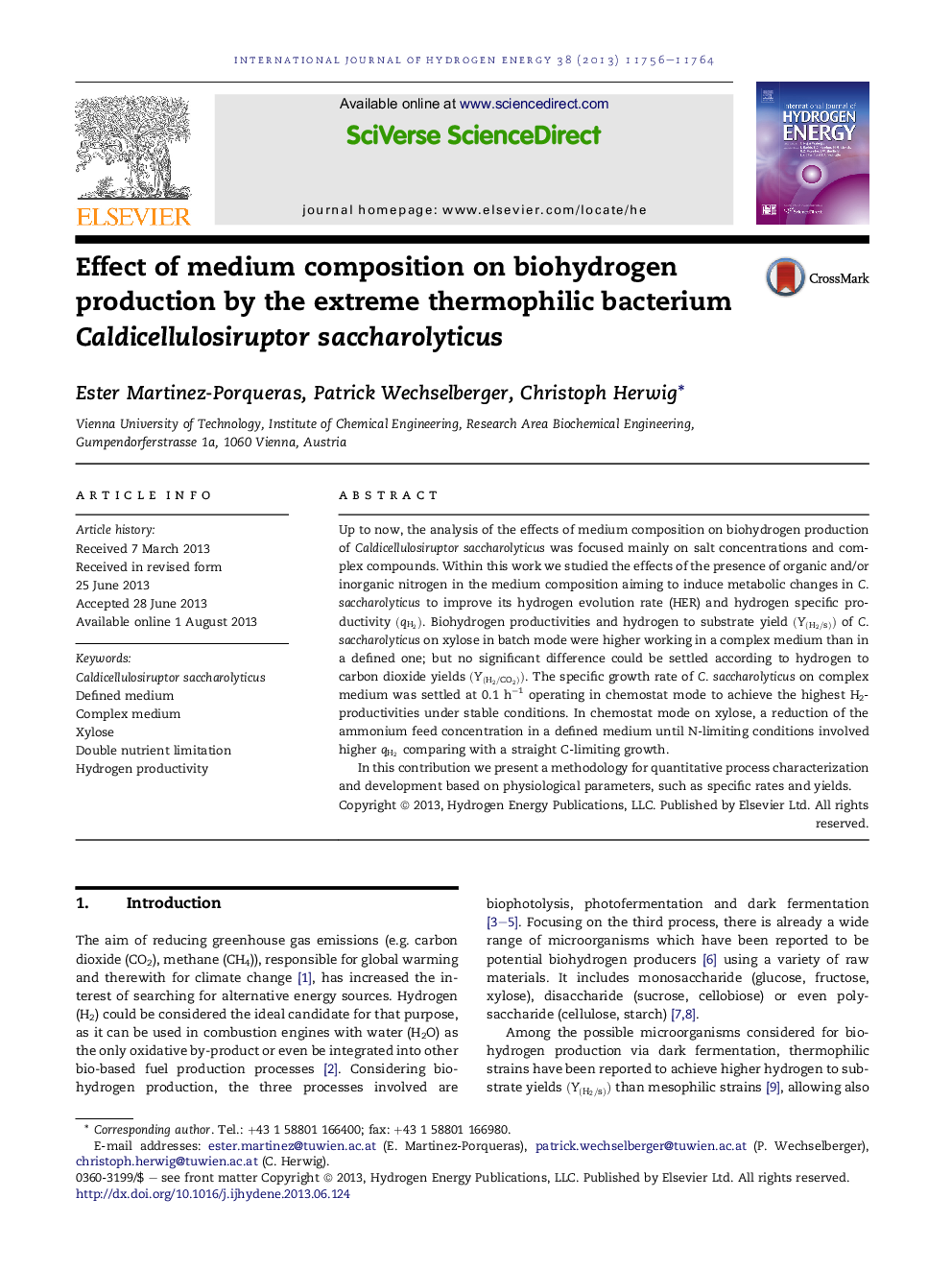| Article ID | Journal | Published Year | Pages | File Type |
|---|---|---|---|---|
| 1274891 | International Journal of Hydrogen Energy | 2013 | 9 Pages |
•Effects of medium composition on H2 production by C. saccharolyticus.•Physiological parameters discussed in batch and continuous mode on xylose.•Higher HER, qH2qH2 and Y(H2/s)Y(H2/s) in complex medium than in defined medium on batch mode.•Positive effects on the metabolic H2-pathway under N-limitation in chemostat mode.•Y(H2/CO2)Y(H2/CO2) for possible future integrated bioprocess systems.
Up to now, the analysis of the effects of medium composition on biohydrogen production of Caldicellulosiruptor saccharolyticus was focused mainly on salt concentrations and complex compounds. Within this work we studied the effects of the presence of organic and/or inorganic nitrogen in the medium composition aiming to induce metabolic changes in C. saccharolyticus to improve its hydrogen evolution rate (HER) and hydrogen specific productivity (qH2)(qH2). Biohydrogen productivities and hydrogen to substrate yield (Y(H2/s))(Y(H2/s)) of C. saccharolyticus on xylose in batch mode were higher working in a complex medium than in a defined one; but no significant difference could be settled according to hydrogen to carbon dioxide yields (Y(H2/CO2))(Y(H2/CO2)). The specific growth rate of C. saccharolyticus on complex medium was settled at 0.1 h−1 operating in chemostat mode to achieve the highest H2-productivities under stable conditions. In chemostat mode on xylose, a reduction of the ammonium feed concentration in a defined medium until N-limiting conditions involved higher qH2qH2 comparing with a straight C-limiting growth.In this contribution we present a methodology for quantitative process characterization and development based on physiological parameters, such as specific rates and yields.
